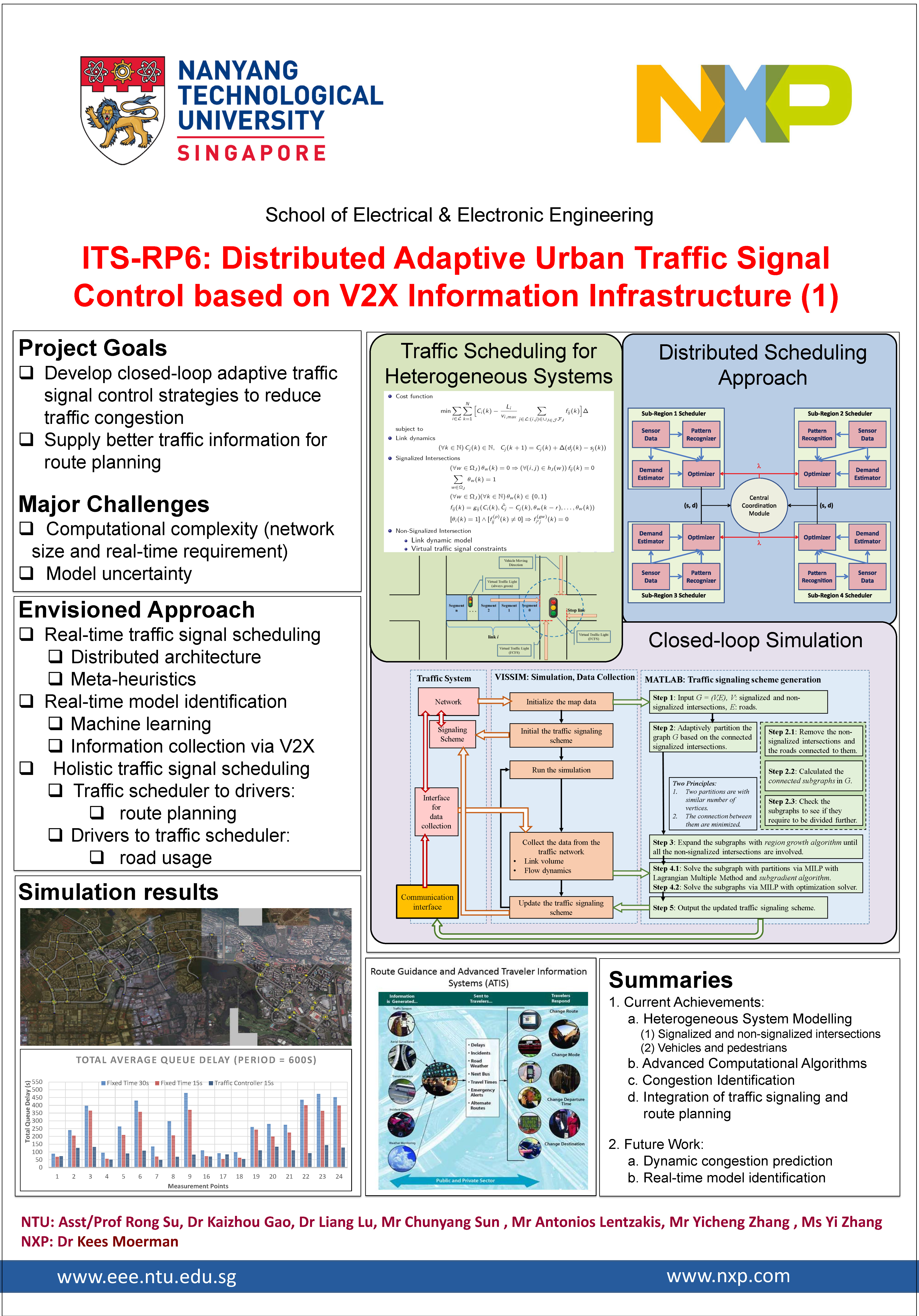|
Heterogeneous Urban Traffic System Modelling and Traffic Light Scheduling
Summary
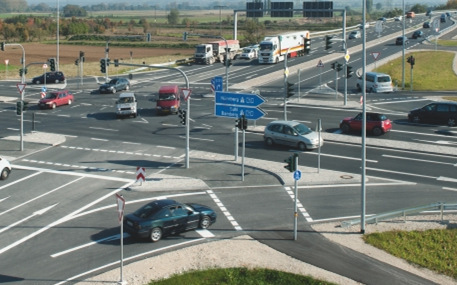 |
A heterogeneous model for urban traffic system with signalized and non-signalized itersections
Developed based on Cell Transmission Model, where the dynamics of an urban traffic network controlled by traffic lights is described by a novel model, which inserts mixed logical constraints into a cell transmission flow dynamic model, capable of capturing the nonlinear relationship between each outgoing link flow rate and the corresponding upstream and downstream link capacities and the past traffic light signals
With the capability to describe heterogeneous intersections
Multiple features involved: traffic merging, speed limits, turning ratios, …
|
Contributions
A Macroscopic Model for Urban Traffic Systems
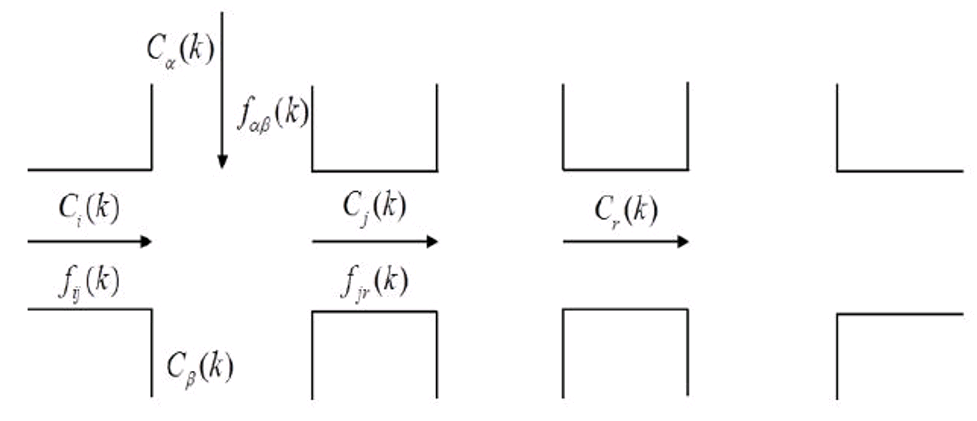 |
A traffic network is described by a flow dynamic model similar to the Daganzo's cell-transmission model.
A piece-wise constant speed function with respect to the duration of the green period is proposed for the traffic system model, which has been verified by the road test.
Our key contribution in this model is to describe each outgoing shift within each time interval as a nonlinear mixed logical switching function over the source link's density, the destination link's density and capacity, and the driver's potential psychological response to the past traffic light signals.
This outgoing shift model makes our approach applicable to both under-saturated and over-saturated situations.
|
A Heterogeneous Model for Urban Traffic Systems
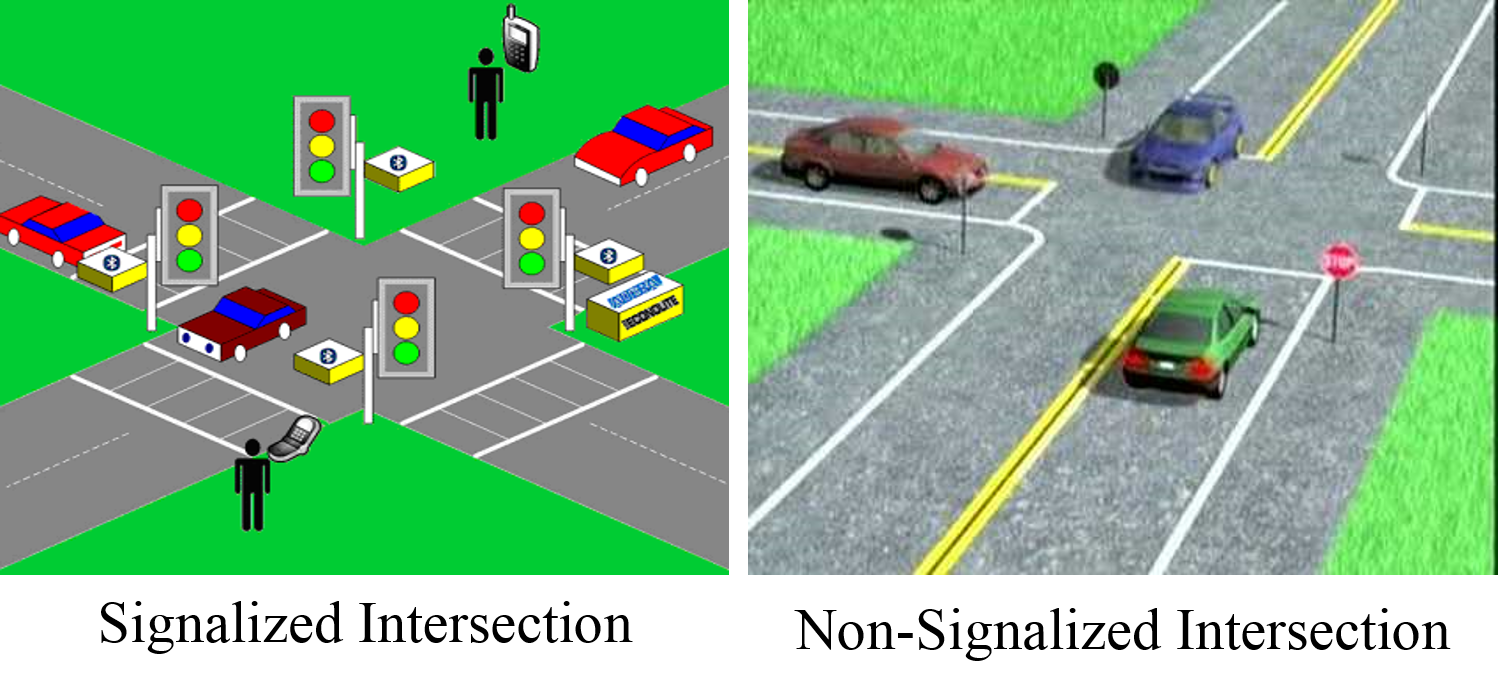 |
In signalized intersections, recent history as well as flow dynamics are included to account to determine the green time period.
Non-signalized intersections, where vehicles stop before leaving the intersection. Contiguous vehicle sequences are grouped together and are served in a first come first serve basis.
|
Traffic Light Scheduling
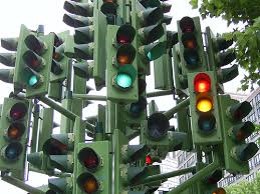 |
The objective is to minimize the network-wise delay time for the urban traffic system.
The network-wise delay time is estimated by the total waiting time caused by the traffic lights.
Constraints involved in this problem formulation include the link dynamics constraints, the exiting flow dynamics constraints and the signal staging constraints.
The link dynamics is decribed with flow conservation model while the exiting flow model is built based on the outgoing link flow rate, the corresponding upstream and downstream link capacities and the historical data for traffic light signal scheduling.
|
A Distributed Computational Architecture
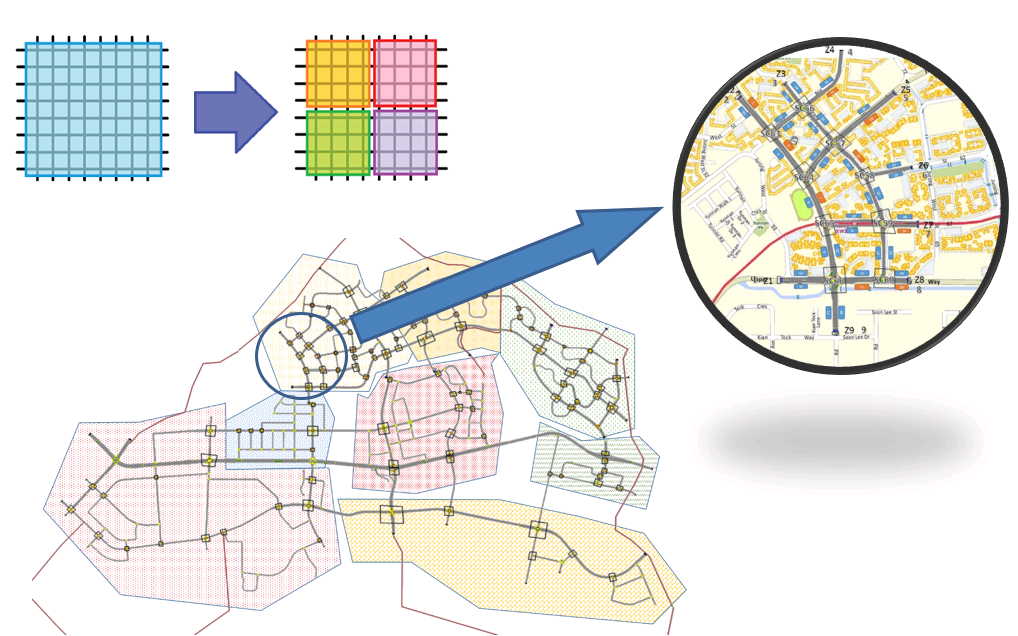 |
To overcome the high computational complexity involved in the centralized strategy, we propose a distributed strategy based on the Lagrangian multiplier method and the subgradient method.
This structure allows users to implement computational intelligence methodologies for solving the large scale optimization problem involved in urban traffic signal scheduling problem.
|
Field Test and Model Validation
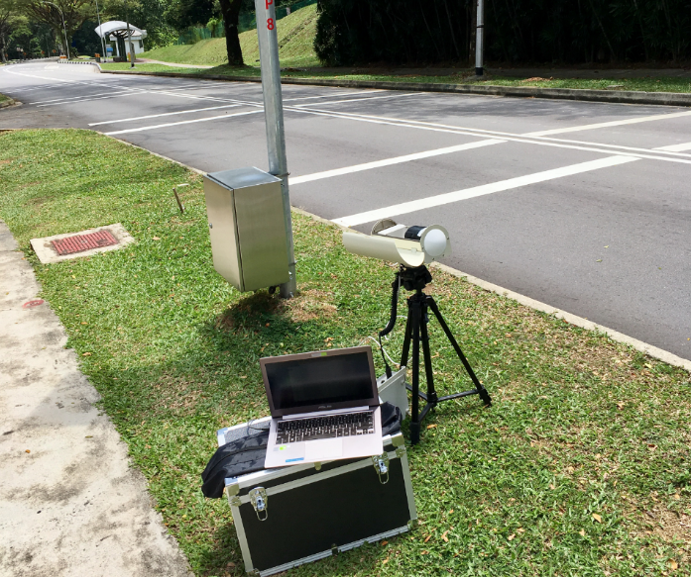 |
The motivation behind the piece-wise constant speed profile model is that if the stage has been active for the past several continuous intervals, then the drivers intend to keep a high speed
To validate the proposed model, we have also done some road tests in Singapore with speed guns. The data is collected at an intersection in Singapore by two speed guns. We select four time intervals during two days which include the peak hours and off-peak hours.
We can conclude that with the increasing of the length of green time at the intersection, the average exit speed is increasing and finally saturated with a certain value which is always determined by the upper speed limit.
|
Poster for NTU-NXP Workshop in Aug 2017
Reference
Y. Zhang, R. Su, Y. Zhang and C. Sun. “Modelling and Traffic Signal Control of Heterogeneous Traffic Systems.” arXiv, 2017.
Y. Zhang, R. Su, C. Sun. Modelling and traffic signal control of a heterogeneous traffic network with signalized and non-signalized intersections. 2017 IEEE Conference on Control Technology and Applications, Kohala Coast. 2017.
Y. Zhang, R. Su and K. Gao. “Urban Road Traffic Light Real-Time Scheduling.” The 54th IEEE Conference on Decision and Control (CDC’15), 2015.
Y. Zhang, Y. Su and R. Su. “Real-Time Scheduling in Urban Road Traffic Light Control.” 14th Asian Pacific Intelligent Transportation System Conference, 2015.
|







